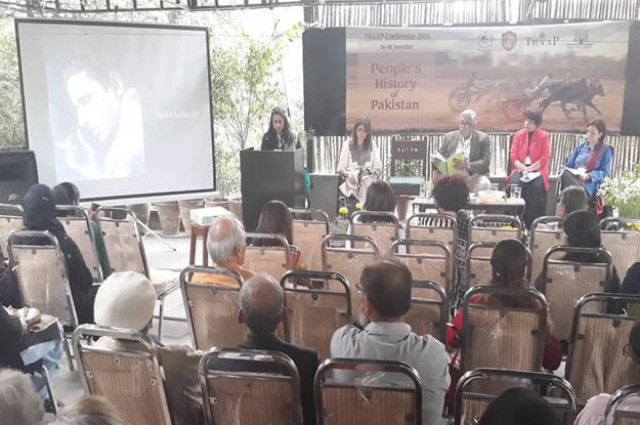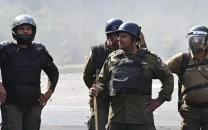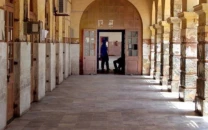History and evolution of select art forms analysed
Art history teacher and designer Sadia Pasha Kamran presented the last paper of the session

The 5th paper of the Conference being presented by Samina Iqbal titled “Sheikh Safdar Ali and the Emergence of Modern Avant-Garde Art in Pakistan”. PHOTO: fb.com/Thaap
The second session of the 6th International THAAP Conference, focusing on the history and evolution of various art forms in the Indian subcontinent, kicked-off on Friday with papers on artist Sheikh Safdar Ali, 19th century painters of Lahore, truck art and popular culture of cynicism and its aesthetic demonstrations being presented on the occasion.
Sheikh Safdar Ali was a self-taught artist whose career commenced when he moved to Bombay, Samina Iqbal remarked while presenting her paper on Ali, the fifth of the conference. Iqbal said Ali had set up home initially in Karachi before relocating to Lahore where he had become a part of the quickly-evolving art scene of the new nation. She said his work represented a fusion of Indian and colonial elements.
Inaugural session: ‘Our history has been written for kings only’
Kanwal Khalid of the Punjab University explored paintings made in the city during the Sikh era. She said the ascent and decline of the city’s fortunes could be seen through paintings produced in the 19th century. Khalid’s work explored three paintings by Kahar Singh, a painter in the time of Maharaja Sher Singh, in a bid to depict the events that transpired in the twilight years of the Sikh Empire.

Khalid said the influence of art forms peculiar to the era and those preceding it could be seen in Singh’s work. She said traces of European art and religious influences could also be seen in his work.
Aisha Imdad Ali of the COMSATS Institute of Information Technology, Islamabad, presented a paper that explored the riveting and unique artwork rendered on trucks and analysed embellishments used to interpret the ideas depicted therein. Ali interpreted the significance of the medium from the point of its creators.
Art history: ‘Miniatures were misunderstood’
She said truck art depicted their personal and political views and of those who owned the vehicles. Ali said truck art had evolved from art work rendered on horse carriages during the Mughal era. She also shed light on differences between truck art found across the nation’s various provinces.
Art history teacher and designer Sadia Pasha Kamran presented the last paper of the session. Her work explored the enduring popularity of cynicism, mockery and satire across the nation. Identifying cynicism as an enduring phenomenon in society, Kamran’s work looked into various features that fostered a culture that thrived on it. She said people’s mindset could be discerned by inspecting art forms peculiar to different eras. Architect Ahmed Pervaiz Mirza presided over the session.
Published in The Express Tribune, November 7th, 2015.



















COMMENTS
Comments are moderated and generally will be posted if they are on-topic and not abusive.
For more information, please see our Comments FAQ